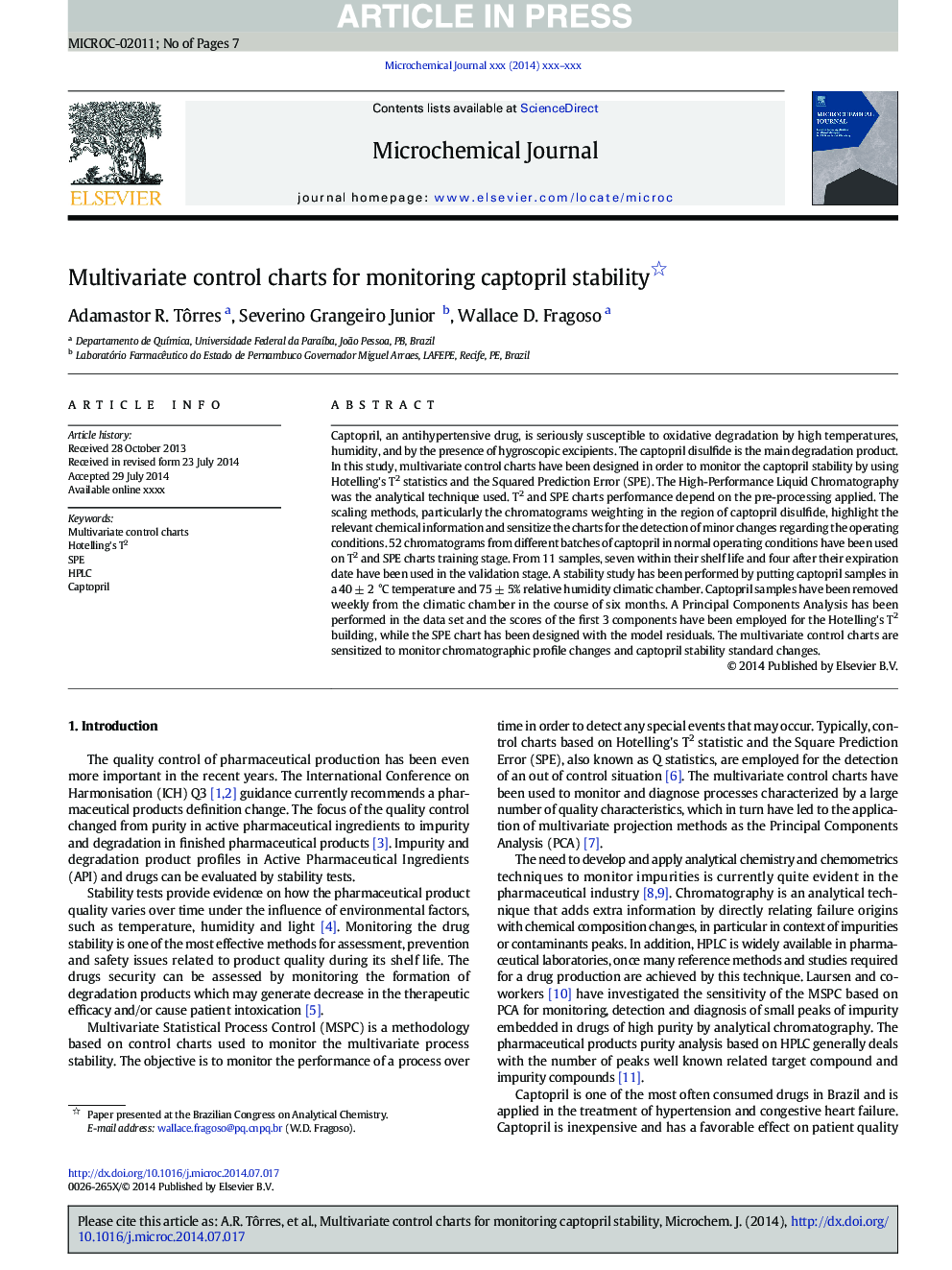| Article ID | Journal | Published Year | Pages | File Type |
|---|---|---|---|---|
| 7642945 | Microchemical Journal | 2015 | 7 Pages |
Abstract
Captopril, an antihypertensive drug, is seriously susceptible to oxidative degradation by high temperatures, humidity, and by the presence of hygroscopic excipients. The captopril disulfide is the main degradation product. In this study, multivariate control charts have been designed in order to monitor the captopril stability by using Hotelling's T2 statistics and the Squared Prediction Error (SPE). The High-Performance Liquid Chromatography was the analytical technique used. T2 and SPE charts performance depend on the pre-processing applied. The scaling methods, particularly the chromatograms weighting in the region of captopril disulfide, highlight the relevant chemical information and sensitize the charts for the detection of minor changes regarding the operating conditions. 52 chromatograms from different batches of captopril in normal operating conditions have been used on T2 and SPE charts training stage. From 11 samples, seven within their shelf life and four after their expiration date have been used in the validation stage. A stability study has been performed by putting captopril samples in a 40 ± 2 °C temperature and 75 ± 5% relative humidity climatic chamber. Captopril samples have been removed weekly from the climatic chamber in the course of six months. A Principal Components Analysis has been performed in the data set and the scores of the first 3 components have been employed for the Hotelling's T2 building, while the SPE chart has been designed with the model residuals. The multivariate control charts are sensitized to monitor chromatographic profile changes and captopril stability standard changes.
Related Topics
Physical Sciences and Engineering
Chemistry
Analytical Chemistry
Authors
Adamastor R. Tôrres, Severino Junior, Wallace D. Fragoso,
